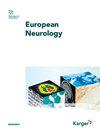Outcomes of Mechanical Thrombectomy for Acute Ischemic Stroke When Multiple Passes Are Required and Associated Risk Factors
IF 2.1
4区 医学
Q3 CLINICAL NEUROLOGY
引用次数: 0
Abstract
Introduction: This study aimed to evaluate the outcomes of mechanical thrombectomy for acute ischemic stroke when multiple passes are required and to identify the associated risk factors. Methods: Consecutive patients with acute ischemic stroke treated with mechanical thrombectomy at the Neurology Department of Ninth People’s Hospital and the Neurosurgery Department of Xinhua Hospital of Shanghai Jiao Tong University School of Medicine from 2013 to 2018 were included. Patients were divided into 2 groups: those who received ≤2 passes and those who received >2 passes. Outcomes of the 2 groups were compared. Multivariate linear regression was used to determine factors associated with the need for >2 passes. All patient data were reviewed retrospectively. Results: A total of 122 patients were included, of whom 83 patients required ≤2 passes and 39 patients required >2 passes. After adjusting for sex, atrial fibrillation history, smoking history, and involvement of middle cerebral artery and internal cerebral artery, the National Institutes of Health Stroke Scale (NIHSS) score was associated with a 1.08-times greater risk of >2 passes (95% confidence interval [CI]: 1.01–1.17), and internal carotid artery with a 5.13-times greater risk of >2 passes (95% CI: 1.02–25.69). Having more than 2 passes was associated with significantly higher 7-day (25.6% vs. 6%), 90-day mortality rates (34.2% vs. 16%) and a significantly lower recanalization rate (66.7% vs. 89.2%). Conclusion: Needing more than 2 passes during mechanical thrombectomy is associated with poorer outcomes. Higher preprocedural NIHSS scores and internal carotid artery thrombi are associated with more than 2 passes.机械取栓治疗急性缺血性脑卒中的结果及相关危险因素
引言:本研究旨在评估急性缺血性卒中需要多次通过时机械血栓切除术的疗效,并确定相关的风险因素。方法:纳入2013年至2018年在上海交通大学医学院第九人民医院神经内科和新华医院神经外科连续接受机械血栓切除术治疗的急性缺血性脑卒中患者。患者被分为2组:接受≤2次通过的患者和接受>2次通过的病例。比较两组的结果。多元线性回归用于确定与需要2次以上通过相关的因素。对所有患者数据进行回顾性审查。结果:共纳入122名患者,其中83名患者要求≤2次通过,39名患者要求>2次通过。在调整了性别、心房颤动史、吸烟史以及大脑中动脉和大脑内动脉受累后,美国国立卫生研究院卒中量表(NIHSS)评分与>2次通过的1.08倍风险相关(95%置信区间[CI]:1.01–1.17),和颈内动脉,2次以上通过的风险高5.13倍(95%可信区间:1.02–25.69)。超过2次通过与显著更高的7天死亡率(25.6%对6%)、90天死亡率(34.2%对16%)和显著更低的再通率(66.7%对89.2%)相关。结论:机械血栓切除术中需要2次以上的通过与较差的结果相关。较高的硬膜前NIHSS评分和颈内动脉血栓与2次以上通过相关。
本文章由计算机程序翻译,如有差异,请以英文原文为准。
求助全文
约1分钟内获得全文
求助全文
来源期刊

European Neurology
医学-临床神经学
CiteScore
4.40
自引率
4.20%
发文量
51
审稿时长
4-8 weeks
期刊介绍:
''European Neurology'' publishes original papers, reviews and letters to the editor. Papers presented in this journal cover clinical aspects of diseases of the nervous system and muscles, as well as their neuropathological, biochemical, and electrophysiological basis. New diagnostic probes, pharmacological and surgical treatments are evaluated from clinical evidence and basic investigative studies. The journal also features original works and reviews on the history of neurology.
 求助内容:
求助内容: 应助结果提醒方式:
应助结果提醒方式:


